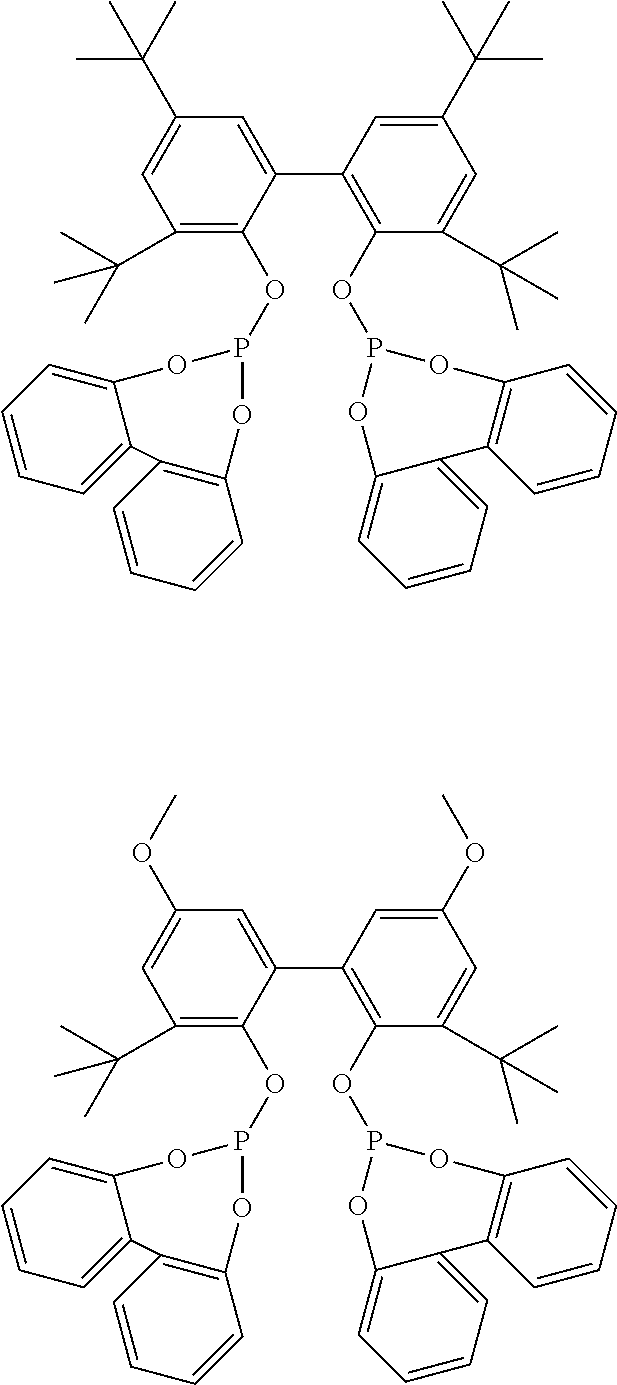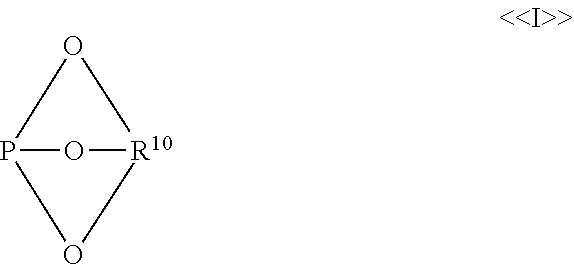Processes for producing organophosphorous compounds
a technology of organophosphorous and compound, which is applied in the field of organophosphorous composition, can solve the problems of requiring special attention, and affecting the stability of phosphite ligand, so as to reduce the phosphorous acid content of organophosphites and low levels
- Summary
- Abstract
- Description
- Claims
- Application Information
AI Technical Summary
Benefits of technology
Problems solved by technology
Method used
Image
Examples
examples
[0050]All parts and percentages in the following examples are by weight unless otherwise indicated. All manipulations are done in a N2-glove box or via Schlenk techniques to exclude air and moisture unless otherwise indicated. Solid Ligand A or B is used in the following examples:
[0051]Phosphorous acid content of solid organophosphite is determined by ion chromatography (IC) using a Dionex ICS 2100 ion chromatograph with eluent generation and suppressed conductivity detection including a carbonate removal device. The chromatograph is fitted with an IonPac AG11-HC Guard Column and an IonPac AS11-HC Analytical Column. Data analysis is performed with Chromeleon 7.0 software. Unless otherwise indicated, samples are prepared by dissolution of the solid ligand (0.1 to 0.5 g) in toluene (5-10 mL) followed by extraction of the toluene solution with aqueous sodium hydroxide (0.004 M; 12-15 mL) or deionized water (8-15 mL). Acid content of toluene solutions are determined in like fashion. Pho...
examples 3-5
[0056]Solid Ligand A (0.3 g) containing 1289 ppm phosphorous acid is weighed into 20 mL glass vials and dissolved in toluene (6.5 g) at ambient temperature. The solutions are filtered through syringe filters of varying porosity. The filtrates are extracted with water and the water layer is analyzed by IC. The results are summarized in Table 4.
TABLE 4Filtration of Ligand A dissolved in toluene throughvarying porosity filters.Post-filtration% ofFilterphosphorousphosphorousExample(micron)acid (ppm)acid removed30.206.799.4840.454.599.6551.0021.698.32
The examples clearly demonstrate a method to achieve a reduction in phosphorous acid content by filtration of a solution comprising an organophosphite and toluene with a low porosity filter.
Examples 6-8
[0057]The procedure of Examples 1-3 is repeated with the exception of heating the solutions to 70° C. immediately prior to filtration. The results are summarized in Table 5.
TABLE 5Filtration of Ligand A dissolved in toluene throughvarying poro...
examples 6-8
show that the temperature at which the filtration is conducted is not critical.
PUM
| Property | Measurement | Unit |
|---|---|---|
| dielectric constant | aaaaa | aaaaa |
| dielectric constants | aaaaa | aaaaa |
| temperature | aaaaa | aaaaa |
Abstract
Description
Claims
Application Information
 Login to View More
Login to View More - R&D
- Intellectual Property
- Life Sciences
- Materials
- Tech Scout
- Unparalleled Data Quality
- Higher Quality Content
- 60% Fewer Hallucinations
Browse by: Latest US Patents, China's latest patents, Technical Efficacy Thesaurus, Application Domain, Technology Topic, Popular Technical Reports.
© 2025 PatSnap. All rights reserved.Legal|Privacy policy|Modern Slavery Act Transparency Statement|Sitemap|About US| Contact US: help@patsnap.com



